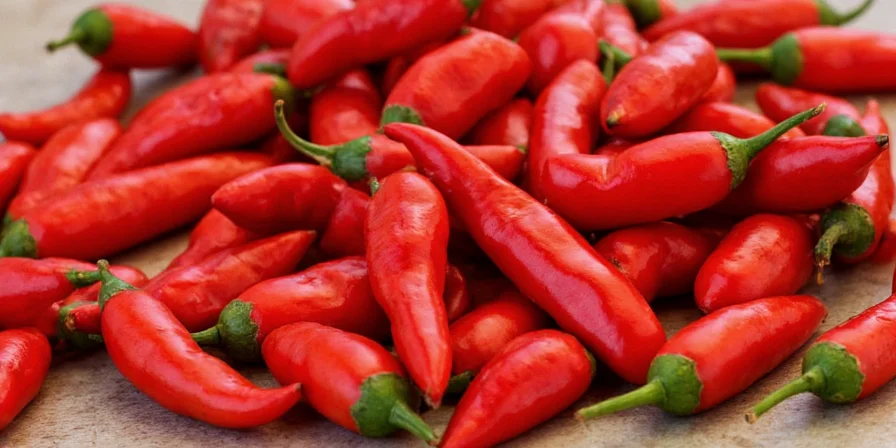Fiery & Fabulous: 10 Must-Know Tips for Mastering Thai Bird’s Eye Chilies in Your Kitchen!
When it comes to adding bold heat and vibrant flavor to your dishes, few spices can compete with the mighty Thai bird’s eye chili. Known as prik kee noo in Thailand, this tiny but powerful pepper is a staple in Southeast Asian cuisine. Whether you're a culinary pro or a daring home cook, mastering its use can take your cooking from bland to brilliant in seconds.
Table of Contents
- What Are Thai Bird’s Eye Chilies?
- The Heat Factor: Scoville Scale Demystified
- 10 Practical Cooking Tips for Using Thai Bird’s Eye Chilies
- Storage Secrets: Keeping Them Fresh Longer
- Culinary Uses Around the Globe
- Alternatives When You Can’t Find Them
- Safety First: Handling Like a Pro
- Conclusion
What Are Thai Bird’s Eye Chilies?
Thai bird’s eye chilies are small, pointy peppers that pack a punch. Commonly found in red, green, and even yellow varieties, they are essential in many traditional Thai dishes like green curry, pad thai, and som tam (green mango salad).
Origins & Popularity
These chilies originated in Central America but found their spiritual home in Thailand and other parts of Southeast Asia. Today, they’re a symbol of fiery cuisine and a must-have ingredient in any spice lover’s pantry.
The Heat Factor: Scoville Scale Demystified
The Scoville scale measures the spiciness of peppers based on their capsaicin content. Here’s how Thai bird’s eye chilies stack up:
| Pepper | Scoville Units | Heat Level |
|---|---|---|
| Thai Bird’s Eye Chili | 50,000–100,000 SHU | Moderate to Very Hot |
| Jalapeño | 2,500–8,000 SHU | Mild to Moderate |
| Habanero | 100,000–350,000 SHU | Extremely Hot |
So yes—they’re hot, but not habanero-hot. Still, don't underestimate them!
10 Practical Cooking Tips for Using Thai Bird’s Eye Chilies
If you’ve ever bitten into one by accident (or on purpose), you know just how intense these little guys can be. But when used wisely, they elevate your cooking to new heights. Here are ten tips to help you use them like a pro:
- Use Whole or Finely Chopped? For subtle heat, leave them whole. For a face-melting experience, slice or crush them!
- Balance Is Key Pair spicy chilies with sweet ingredients like palm sugar or tangy lime juice to create harmony in your dish.
- Don’t Fear Fermentation Try fermenting chilies to make homemade nam prik pao (chili paste) or sriracha-like sauces.
- Toast for Extra Flavor Dry-toasting chilies before grinding adds a smoky depth to pastes and powders.
- Pair with Aromatics Garlic, lemongrass, and galangal play well with these chilies. Create a killer flavor base!
- Go Green or Red? Green chilies are less mature—crispier and grassier in flavor. Reds are sweeter and hotter.
- Infuse Oils or Vinegars Make your own chili oil or vinegar by steeping sliced chilies in a warm liquid base.
- Use in Stir-Fries Add them toward the end of cooking to preserve their bright color and sharp bite.
- Freeze for Later Use Freeze whole chilies in a bag and pull out what you need without thawing.
- Make Homemade Curry Paste Blend with shrimp paste, coriander roots, and garlic for authentic Thai curry bases.

Storage Secrets: Keeping Them Fresh Longer
Proper storage ensures your Thai bird’s eye chilies stay fresh and flavorful for weeks—or even months.
- Refrigerator: Store in a breathable bag or container for up to 2 weeks.
- Freezer: Place whole chilies in a freezer-safe bag; they’ll last 6–12 months.
- Dried: Hang bunches upside down in a sunny spot until fully dried. Store in an airtight container away from light.
- Pickled: Make a quick-pickle with vinegar, salt, and sugar for long-lasting zesty chilies.
Culinary Uses Around the Globe
While deeply rooted in Thai cuisine, bird’s eye chilies have traveled far and wide:
| Region | Culinary Use |
|---|---|
| Thailand | Green curry, pad krapow, nam prik |
| Malaysia | Sambal belacan, laksa paste |
| Indonesia | Sambals, rendang seasoning |
| Korea | Used in kimchi variations and spicy soups |
They’ve become a global ambassador for heat lovers everywhere!
Alternatives When You Can’t Find Them
Can’t find Thai bird’s eye chilies at your local market? Don’t panic! Here are some solid substitutes:
- Serrano Peppers: Similar heat level, slightly different flavor profile.
- Chiltepin Peppers: Native to the U.S.-Mexico border, very similar in size and spice.
- Cayenne Powder: Not fresh, but great for dry heat in curries and stews.
- Fresno Peppers: Milder but works in a pinch.
Safety First: Handling Like a Pro
Let’s be real—you don’t want to rub your eyes after chopping these bad boys. Here’s how to stay safe:
- Wear gloves when slicing or crushing them.
- Use separate cutting boards to avoid cross-contamination.
- Wash hands thoroughly—even under nails.
- If irritation occurs, apply milk or yogurt to soothe the burn.
You wouldn’t pet a lion with your bare hands—so treat these like kitchen dynamite!
Conclusion
Thai bird’s eye chilies are more than just a spicy kick—they’re a gateway to deeper flavor, richer textures, and cultural authenticity in your cooking. Whether you're making a classic Thai curry or experimenting with global fusion dishes, these little powerhouses deserve a permanent place in your kitchen arsenal.
From storage hacks to smart substitutions and safety practices, now you’re equipped to handle the heat with confidence. So go ahead—add a few more chilies to that pan. The world is watching (and sweating)!
Remember: Spice is life—but only if you respect the fire.










 浙公网安备
33010002000092号
浙公网安备
33010002000092号 浙B2-20120091-4
浙B2-20120091-4